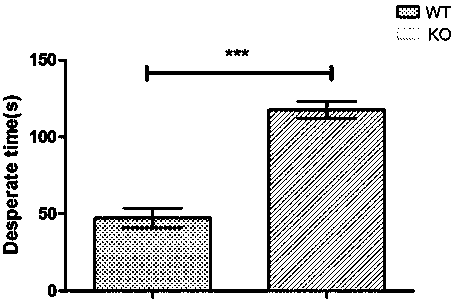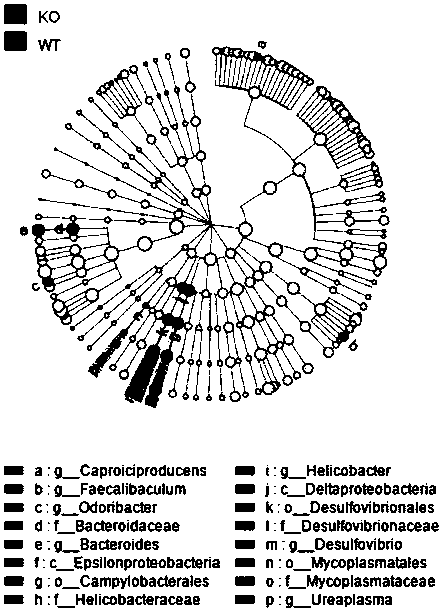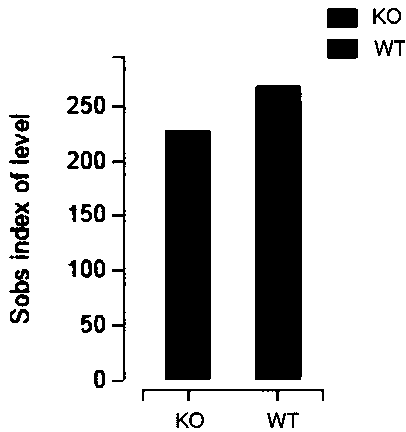Applications of intestinal flora in preparation of drugs for treatment of depression caused by Dcf1 deficiency
A technology of intestinal flora and depression, applied in the application field of intestinal flora in the preparation of drugs for the treatment of depressive behaviors caused by Dcf1 deletion, which can solve the problems of slow onset of psychotherapy and patients not accepting treatment
- Summary
- Abstract
- Description
- Claims
- Application Information
AI Technical Summary
Problems solved by technology
Method used
Image
Examples
Embodiment 1
[0022] Example 1: Forced swimming
[0023]Modified on the basis of the Porsolt assay, the forced swimming assay was used to examine the depressive behavior of the Dcf1 knockout mouse model and the WT mouse model. Place the mouse model in a transparent cylinder filled with clear water (water depth 35cm, water temperature: room temperature (25±1°C); transparent glass cylinder: diameter 20cm, height 46cm), timed for 6 minutes, and the mouse model was recorded 4 minutes later activity. When the body of the mouse model was observed to move or the limbs moved slightly, the behavior was defined as desperate behavior. Statistical mouse model maintains the time of hopeless behavior ( figure 1 ).
Embodiment 2
[0024] Embodiment 2: Feces collection and detection
[0025] Fecal samples were all obtained from adult male mouse models raised in the SPF animal room. Use sterile tweezers to put the naturally excreted fresh mouse model feces into a sterile dry collection tube, place it on an ice box, and send it back to the laboratory within 30 minutes, and send it to Meiji Biosequencing Company for sequencing. Fecal samples were sequenced using the Illumina MiSeq platform.
Embodiment 3
[0026] Embodiment three: flora analysis
[0027] Species diversity analysis, species composition analysis, comparative analysis of two groups of samples, and species difference analysis were performed on the sequencing results. Through the above analysis and comparison, the purpose is to find out the differences in the microbial composition in the feces of the Dcf1KO mouse model and the WT mouse model and the dominant species in the samples of each group (Fig. 2, 3).
PUM
 Login to View More
Login to View More Abstract
Description
Claims
Application Information
 Login to View More
Login to View More - R&D
- Intellectual Property
- Life Sciences
- Materials
- Tech Scout
- Unparalleled Data Quality
- Higher Quality Content
- 60% Fewer Hallucinations
Browse by: Latest US Patents, China's latest patents, Technical Efficacy Thesaurus, Application Domain, Technology Topic, Popular Technical Reports.
© 2025 PatSnap. All rights reserved.Legal|Privacy policy|Modern Slavery Act Transparency Statement|Sitemap|About US| Contact US: help@patsnap.com



